Best acoustic guitars under $/£1,000 2025: 8 of the best options for beginners and experts
Your guide to the best mid-priced acoustic guitars for under a grand
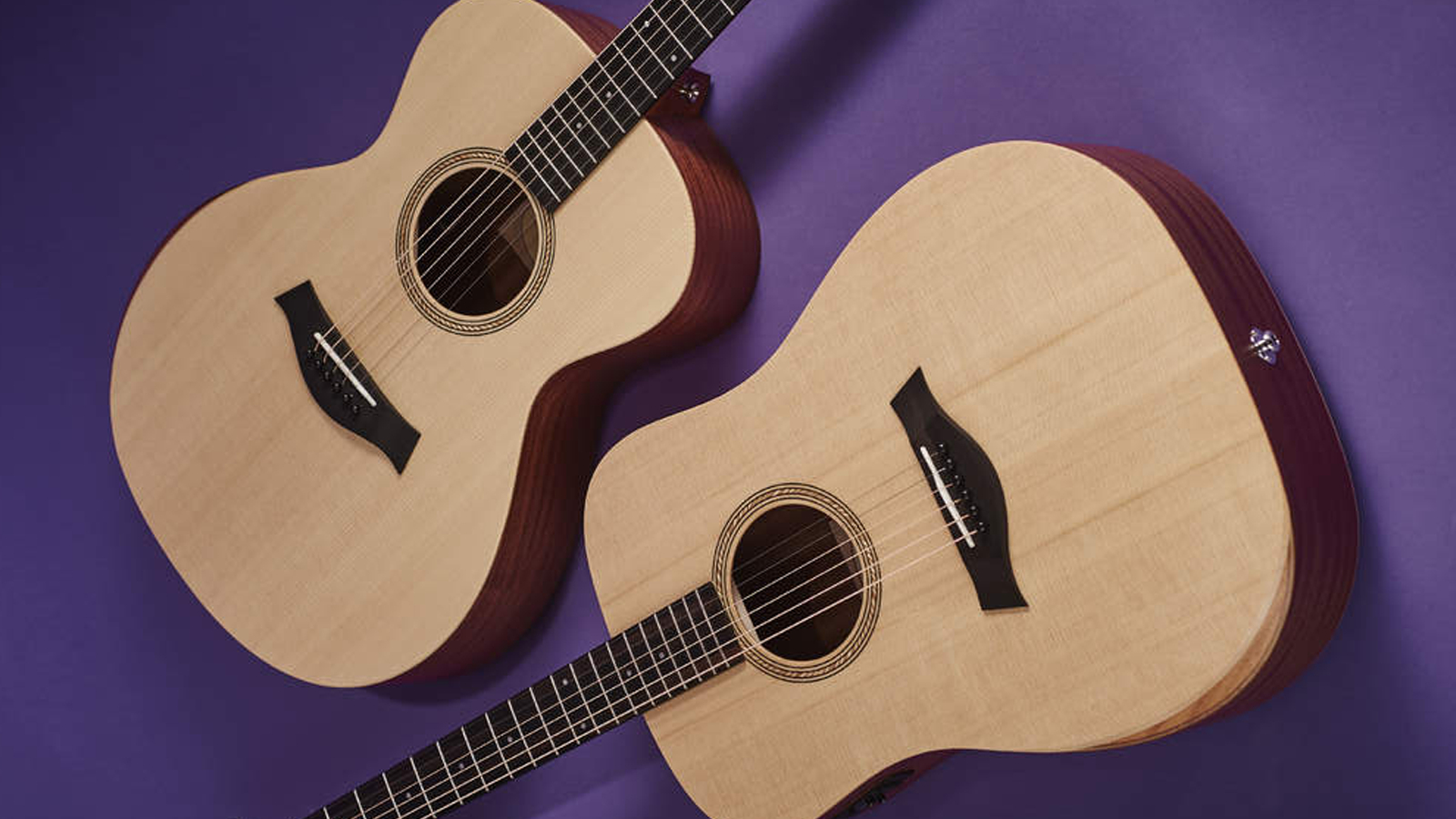
If you're looking to buy one of the best acoustic guitars under $/£1,000 then you're in the right place. You're also very lucky - as the amount of choice when it comes to acoustic guitars under a grand is vast and frankly mind-blowing. For under a grand, you'll be able to get anything from a great beginner acoustic guitar to something that will take you on all the way to festival stages and travelling the world - ideal if you're prepping for guitar lessons with some back-to-school guitar shopping, or want something which will see you right for years to come.
In this guide, we've listed some of the very best acoustic guitars around. We did have to miss out a few killer options purely because we were running low on space to fit them all in; we hope you can forgive us? If it's a great budget acoustic guitar that isn't featured in this guide, then chances are it's featured in one of our other acoustic guitar guides, which you'll find listed throughout this one.
Let's not think about the guitars we've omitted here. We've got acoustics of all shapes and sizes, makes, materials and for all playing styles. While we know you've likely got a budget of a grand, it's not imperative that you spend it all on a guitar. What's most important is that you buy a guitar that best suits your needs - and if that costs less than a thousand dollars or pounds, then you needn't shell out anymore.
We've answered some of the internet's most frequently asked questions at the end of this guide, so if you'd like to read more about the best acoustic guitars under $/£1,000 and what to know when buying one, click the link. If you'd rather just get straight to the products, keep scrolling.
Our top picks
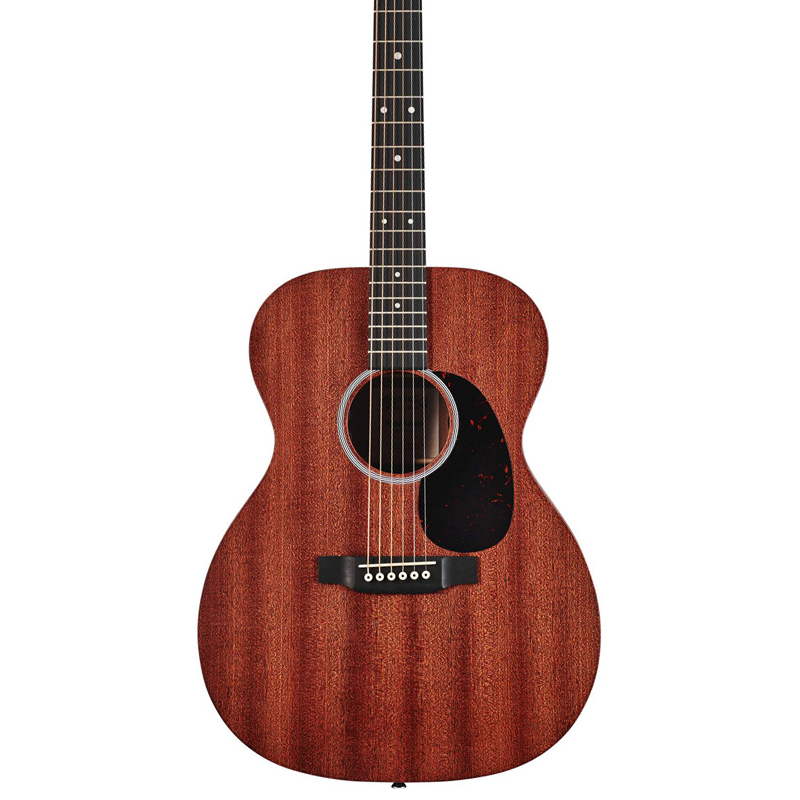
Solid sapele makes a solid choice for this little beauty. It’s a sustainable tonewood choice and makes an excellent alternative to mahogany, deep-grained, with a lighter reddish hue, and often presenting with a subtle tiger stripe in the wood’s pattern.
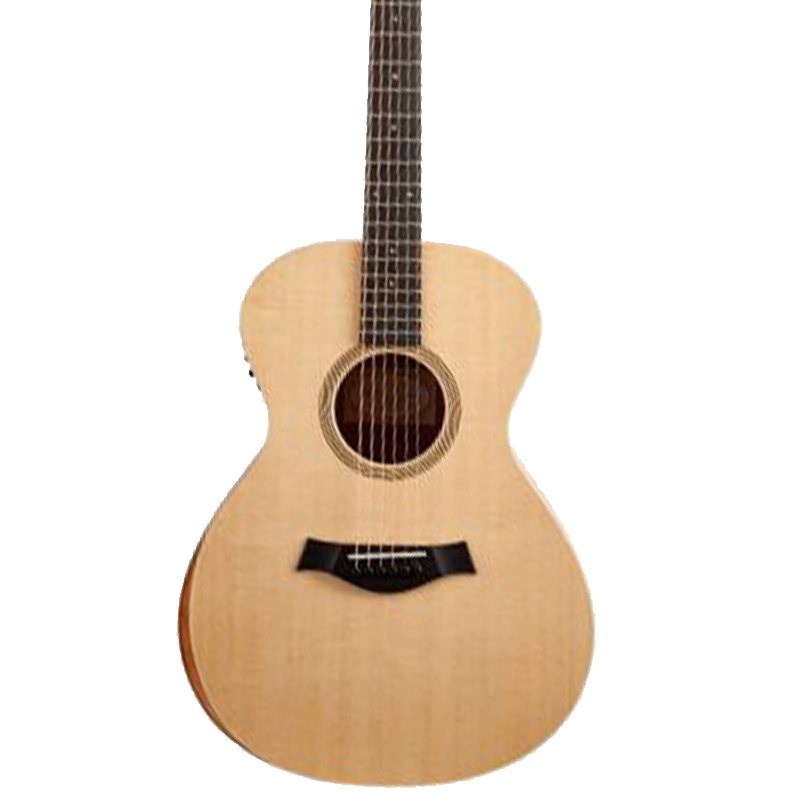
The Academy 12E is number one but in truth it could be a toss up between this and its sibling, the round-shouldered 10E dread. They share so much DNA. There has to be a winner though, and here we’re going with the grand concert-sized model, and with no regrets.
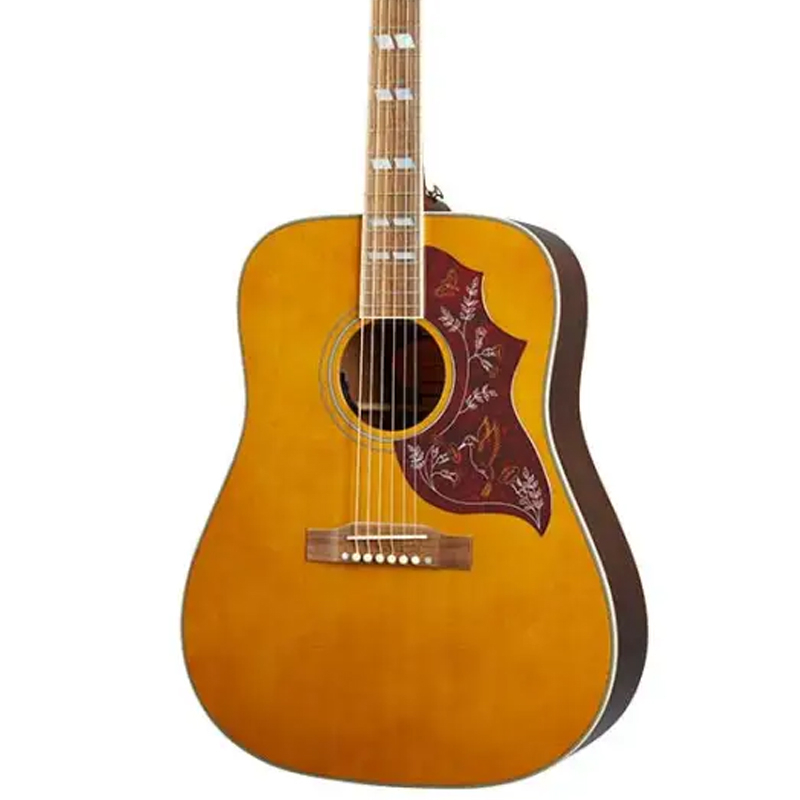
Epiphone’s ‘Inspired by Gibson’ ranges have been well received by guitarists all over the world, allowing them to get one step closer to the Gibson quality and styling without the price tag. The Hummingbird in particular is an iconic Gibson model, so the chance to own an icon without breaking the bank is incredibly enticing.
Best overall
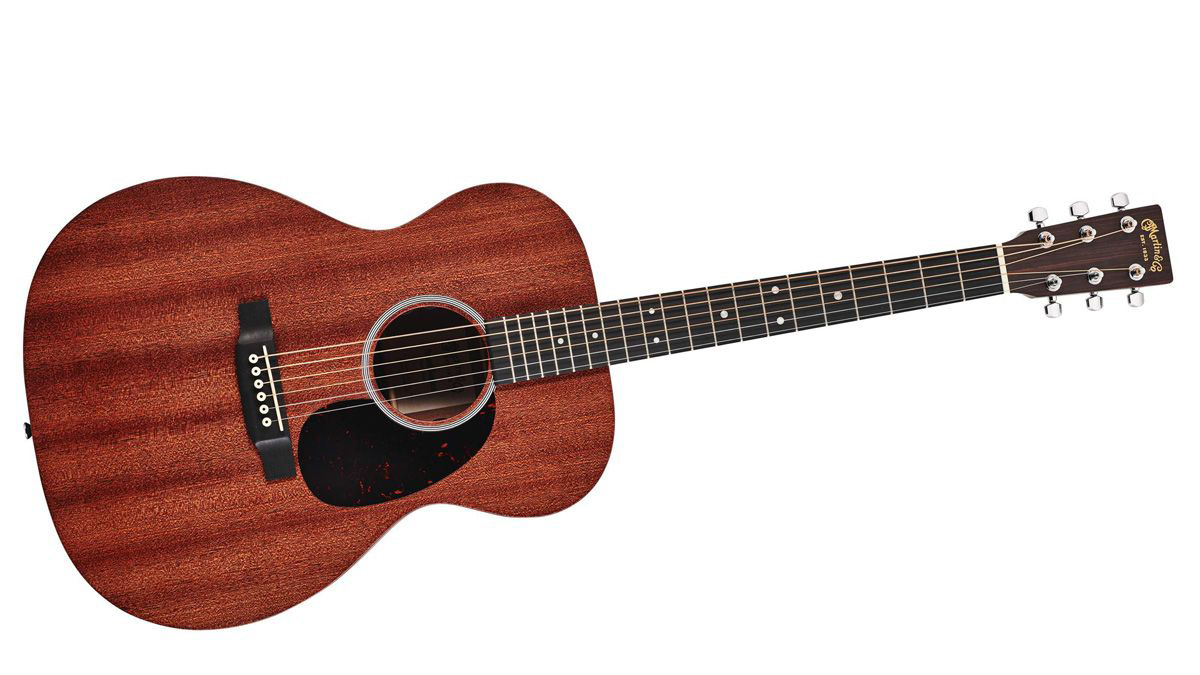
Specifications
Reasons to buy
Reasons to avoid
Solid sapele makes a solid choice for this little beauty. It’s a sustainable tonewood choice and makes an excellent alternative to mahogany, deep-grained, with a lighter reddish hue, and often presenting with a subtle tiger stripe in the wood’s pattern.
Sound-wise, it has the low-end depth to fill out the compact dimensions of the 000 body shape, but there’s an effervescent treble to this that makes it ideal for fingerpicking. The eco-friendly appointments continue with a corian nut and GraphTech White Tusq compensated saddle, and a bridge and fingerboard fashioned from Richlite, an FSC-certified material that’s manufactured using recycled paper and a very viable alternative to ebony.
As with anything new related to guitar design, it might take some time for players to buy into it, but having played many Martin guitars of the X and Road series, the Richlite holds up. Elsewhere, there’s a “select hardwood” neck, which allows Martin to hedge its bets and use whatever’s available – it’s sure to be comfortable though, carved into the Performing Artist profile with High Performance Taper. The hand-rubbed satin finish feels just lovely. Topping it off you’ve got an excellent Fishman MX-T electronics, featuring an upgraded Sonicore pickup, a tuner, and controls tucked away in the soundhole.
Read the full Martin Road Series 000-10E review
Best for beginners
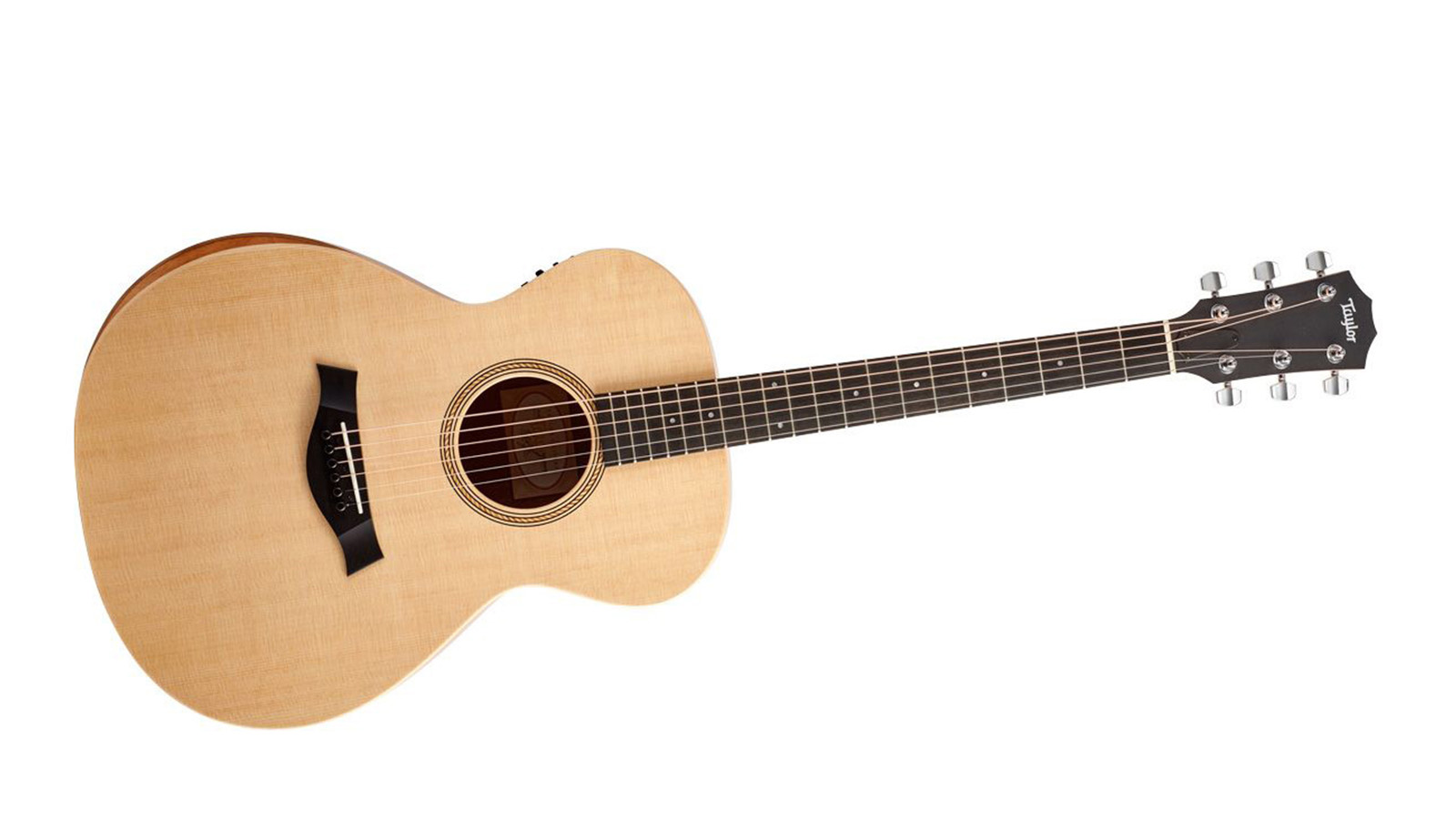
Specifications
Reasons to buy
Reasons to avoid
The Academy 12E is number one but in truth it could be a toss up between this and its sibling, the round-shouldered 10E dread. They share so much DNA. There has to be a winner though, and here we’re going with the grand concert-sized model, and with no regrets.
Both offer well-balanced tones, with the 10E offering a little extra heft in the low end, the 12E a more exuberant treble. Maybe that is what sold us on the 12E – it’ll really make your fingerstyle pop.
It’ll happily handle most styles, though, and strummers will love the rasping upper-midrange and how it articulates your every grace note between chord changes. The 12E is lively and dynamic, and the onboard ES-B pickup and preamp system does an excellent job in translating this when plugged through your amp.
At this price point, Taylor’s Academy Series is knocking it out the park. Now, one could make the argument that the design could do with a little more hot sauce, but frankly we like the clean lines, the rosette detail is a nice touch. And you may be too distracted by the tone and the feel. The Academy 12E might not shout fun but it is; with the armrest on the lower bout and the slim neck profile making it a joy to play.
Read the full Taylor Academy Series 12E review
Best dreadnought
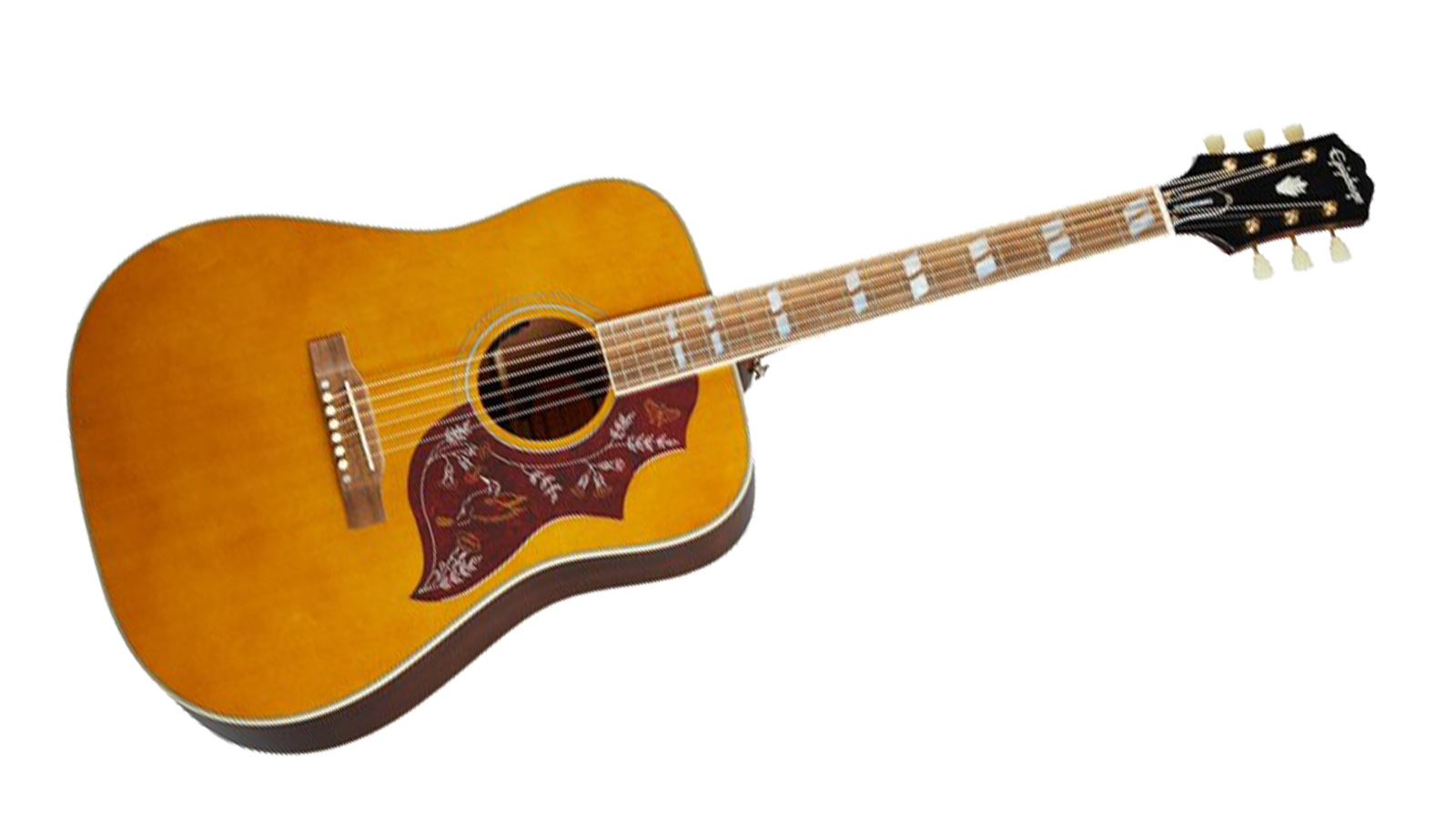
Specifications
Reasons to buy
Reasons to avoid
Epiphone’s ‘Inspired by Gibson’ ranges have been well received by guitarists all over the world, allowing them to get one step closer to the Gibson quality and styling without the price tag. The Hummingbird in particular is an iconic Gibson model, so the chance to own an icon without breaking the bank is incredibly enticing.
The classic combination of a solid Spruce top and Mahogany back and sides is the Hummingbird’s calling card, and it’s great to see that it’s not been scrimped on here. The construction is all-solid, as to accurately accentuate the huge depth of tone that this guitar possesses, while not leaving behind the punchy jangle that the Hummingbird has become known and loved for.
Fishman has supplied their Sonicore pickup and Sonitone preamp for this model, and although we all have preconceived notions of under-saddle pickups, this hummer sounds as natural as ever amplified. Topped off with the classic split parallelogram inlays and the famous Hummingbird pickguard, you’ve got a pretty convincing classic for under a grand.
Read our full Epiphone Inspired By Gibson Hummingbird review
Best jumbo
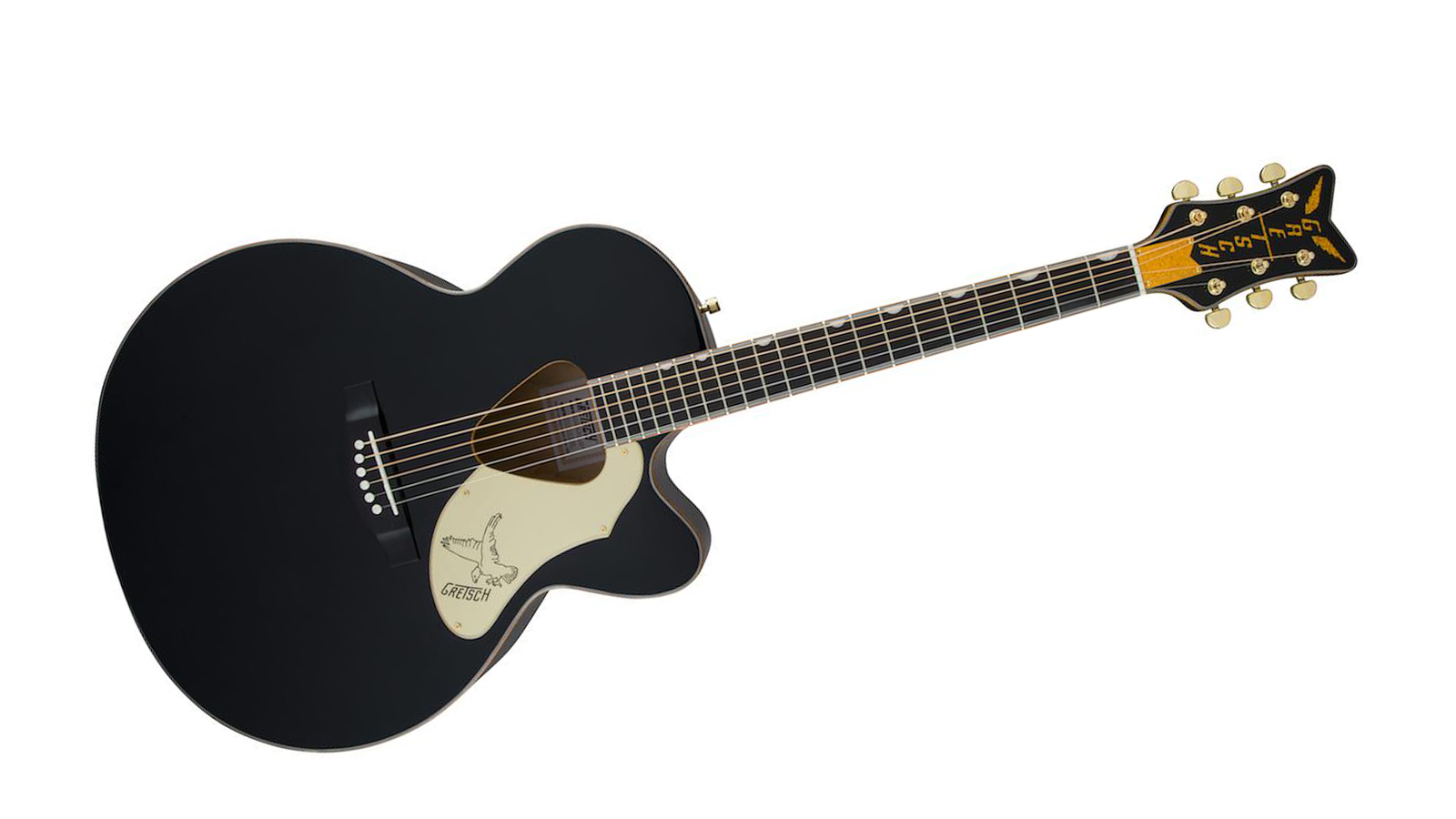
Specifications
Reasons to buy
Reasons to avoid
Nobody is going to miss you when you rock up at the open mic with the Rancher Falcon Jumbo. They’ll see you from the back of the room. They’ll hear you in the next room. This is a big ol’ jumbo, retro-styled and with all of Gretsch’s vintage mojo poured into its design.
Look at the gold embossed headstock. It’s a little much don’t you think? No? Exactly, this isn’t for the shrinking violets, and we can think of few jumbos on the market at this price point that perform better for country strumming and rootsy southern rock styles.
The Fishman pickup can be a little on the quacky side but that’s easily tamed via the 3-band EQ on the preamp, and once you find the sweet spot the Falcon will offer you some big, wide and vibrant tones coming out of that unique triangular soundhole. The build and performance will blow you away. Heck, it’s just so cool.
Read the full Gretsch G5022CBFE Rancher Falcon Jumbo review
Best short scale
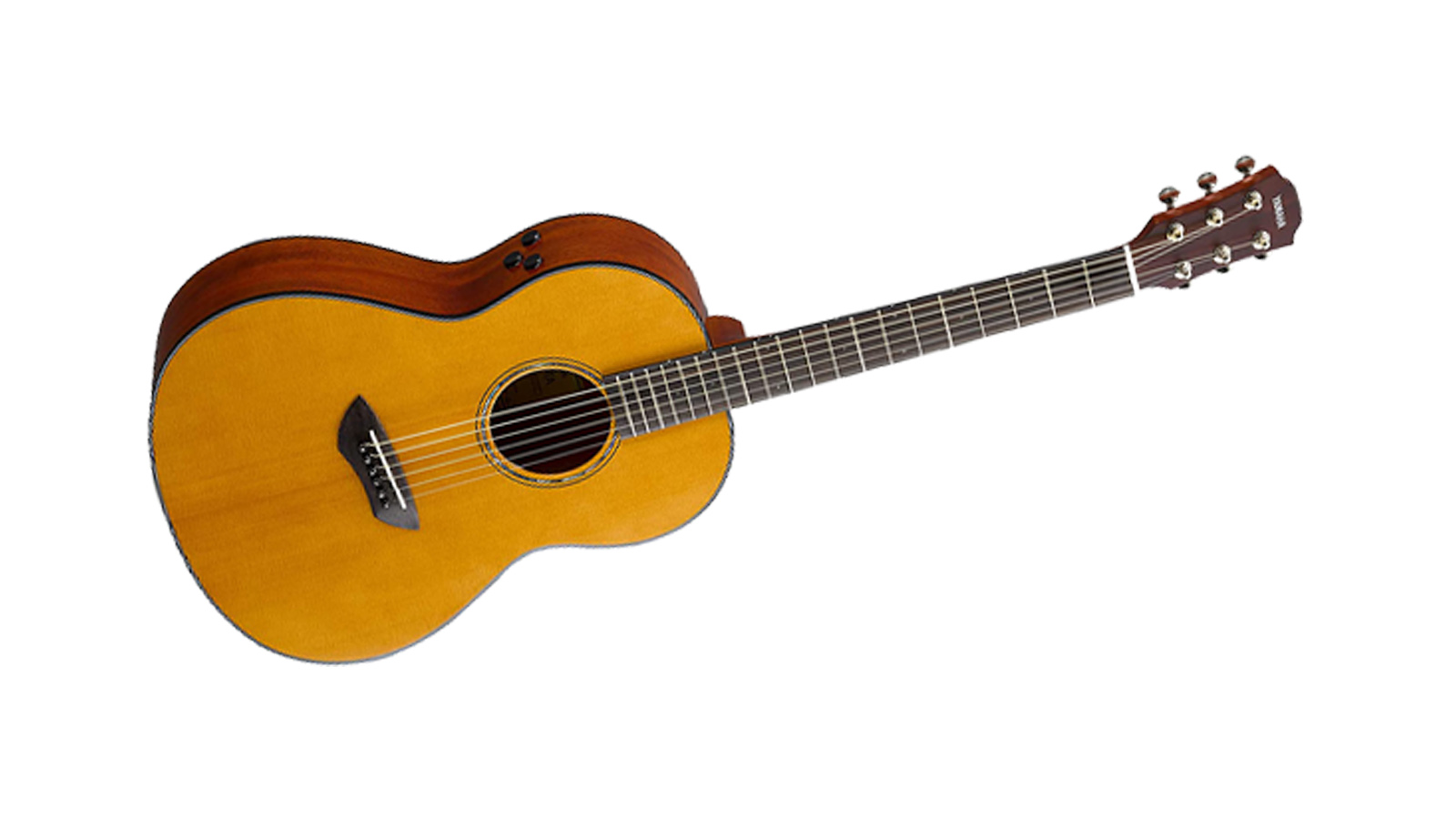
5. Yamaha CSF-TA TransAcoustic
Our expert review:
Specifications
Reasons to buy
Reasons to avoid
Yamaha’s TransAcoustic range has taken the acoustic guitar world by storm as of late, and definitely outraged some purists in the process. Yamaha are pretty fantastic when it comes to innovating new ideas, and we think this (frankly mind-blowing) tech is fantastic too.
Essentially, the CSF-TA features an actuator fitted to the inside of its back panel that vibrates in response to the vibration of your strings. The actuator’s vibrations are then conveyed to the guitar’s body, the air inside your guitar, and then your ears. Pretty mental, isn’t it?
Independent of this incredible tech, the CSF-TA still holds its own. With a solid spruce top and mahogany back and sides, you can expect plenty of punch and clarity from this little guitar. Don’t judge though - for a parlour to have this much depth of tone, it’s impressive to say the least. It’s a pickers’ dream, with an exceptional amount of tonal balance.
Best parlour
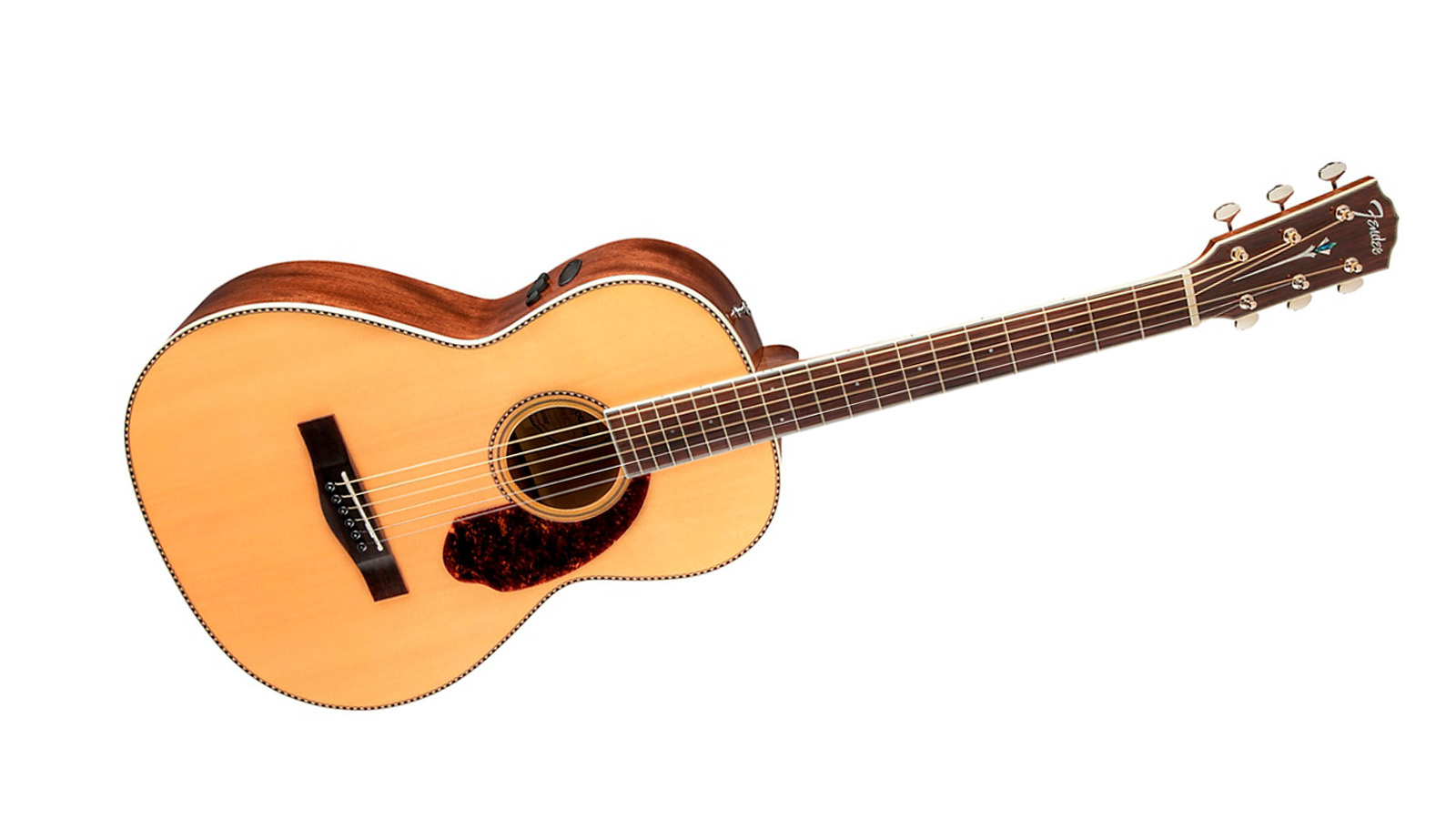
Specifications
Reasons to buy
Reasons to avoid
Sometimes you need a small-bodied guitar. You might be travelling. You might just need something manageable and fun to knock around in the house or the studio. Well, the Fender’s superlative Paramount Series has you covered.
The PM-2 has an all solid build, with solid Sitka spruce on the top, solid mahogany on the back and sides. The short-for-Fender 24.75” scale gives it a very easy feel, so too the neck profile. Quite simply there is nothing to be intimidated by here. For young players with some growing to do, and who are serious about the instrument, this would be an excellent second guitar – a “first proper guitar,” if you like.
The onboard Fishman pickup and preamp has a 3-band EQ and is more than fit for purpose. It was designed for this body shape and does a good job of translating the PM-2’s bright and dynamic acoustic tone for the amplifier. We also love the open-gear tuners and the checkerboard purfling, rosette and binding. There’s a deluxe hardshell case included too. Quality.
Read the full Fender Paramount PM-2 review
Best for playability
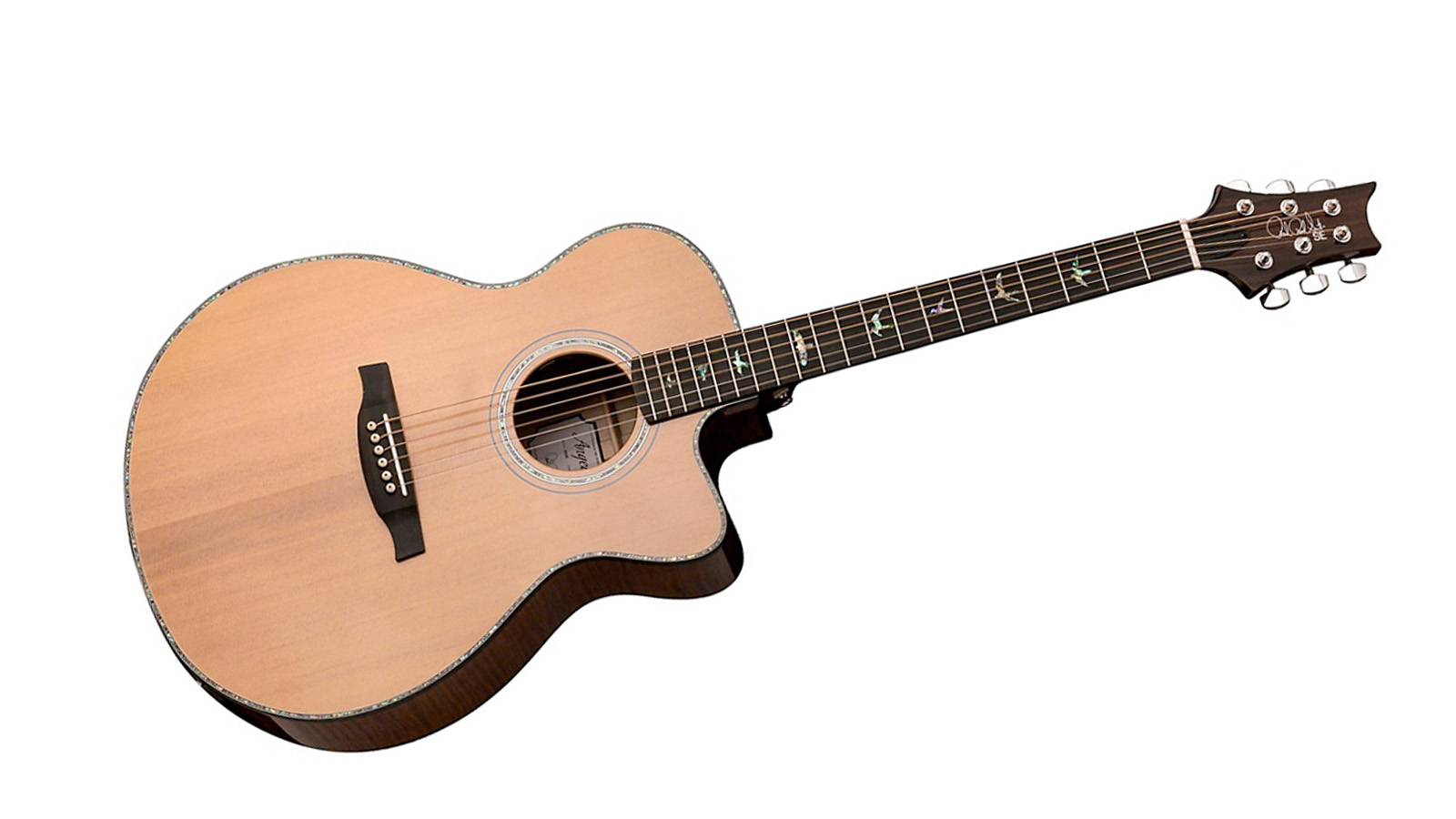
7. PRS SE Angelus AE50E
Our expert review:
Specifications
Reasons to buy
Reasons to avoid
“I’ve always said from the beginning that an electric guitar is first and foremost an acoustic guitar.” That’s Paul Reed Smith himself talking about the SE range of acoustics, which take their bracing patterns from PRS Private Stock models and bring a lot of that PRS feel to acoustic guitar design.
One quick way of doing that is using the same “Wide Fat” neck profile as the electrics. It’s a clever move, making the Angelus a real treat to play, and an obvious staging post for died-in-the-wool electric players going unplugged.
The traditional PRS flourishes elevate it further. There are the real abalone shell bird inlays, with the decorative shell reprised in the binding and rosette. The back and sides of the guitar comprise figured maple laminate. While we’d be expecting solid woods at this price, the flame maple is quite exquisite, and lends this cutaway electro-acoustic a sparkle and definition.
Best baritone

8. Ibanez AE275BT
Our expert review:
Specifications
Reasons to buy
Reasons to avoid
And now for something completely different. There are a number of baritone options on the market but, for the money, the AE275BT is tough to beat. It strikes the balance between the longer 27” scale, which makes the baritone a little intimidating at first, and the grand concert cutaway body, which never feels too cumbersome.
The build is exceptional. You’ll immediately note the wooden vine inlay on the ebony-esque katalox fretboard, and it is certainly a feature (maybe it’s a little too ostentatious but that’s a matter of taste), but wrapping your hands around the fretboard and it is in the finish, in the rolled edges and the feel that the quality presents itself.
The “comfort grip” neck is svelte by most standards, measuring 21mm thick at the 1st fret, 22mm at the 7th; just the thing you need when adapting to the more expansive geography of a baritone instrument. Elsewhere, you’ve got a bone nut and compensated bone saddle, Ibanez’s Advantage bridge pins, which have a stopper on the bulb to make them easier to work with, a lightweight scalloped bridge, and Ibanez’s very decent AP11 pickup.
FAQs

What acoustic guitars can I get for under $/£1,000?
First off, it’s interesting to note that the majority of the acoustic guitars in this list do not usurp the whole budget. That is testament to everything manufacturers are doing right now in keeping the mid-priced instrument category so keenly contested.
But what should you expect for $/£1,000 or less? In this price category, we should be looking for more ‘all solid’ builds, that is acoustics that are built entirely from solid wood as opposed to laminated woods. Now, there’s nothing wrong with laminated wood, and some of our favourite acoustic guitars are made with laminates - but the true character of the wood comes through best when it’s solid.
Of course, there are some laminated builds here. As with any instrument, there are trade-offs to be made with the spec, and often they are done for good reason. Take the PRS Angelus AE50E. It is an exceptional acoustic electric guitar, and it uses flame maple laminate on the back and sides.
The AE50E sounds and looks incredible, but there’s no way PRS could use solid flame maple on a guitar at this price. Crucially, the top is solid wood; and here we have all solid wood on the soundboards. This is key if you want one of the best acoustic guitars under $/£1,000 - as a huge amount of your acoustic guitar’s tone comes from the top.
What difference does the materials make on an acoustic guitar?
Long story short, yes. An acoustic guitar is entirely reliant on the materials of which it is made for its tone, and unlike an electric guitar, where tones can be changed, edited, and manipulated with the touch of a button on an amp or pedal, changing the tone of your acoustic isn't entirely possible. It's for this reason that it's important to be aware of the different guitar-making materials, and how they'll make your guitar sound.
The vast majority of acoustic guitars under $/£1,000 are built using a solid spruce top, with the back and sides of the guitar being made from materials such as mahogany, walnut, maple, koa, and even synthetic materials such as Martin's-own HPL.
We're seeing fewer guitars made with rare and endangered woods, as CITES has changed the game for a lot of acoustic guitar builders when it comes to choosing tonewoods. Restrictions on woods such as rosewood have now been slackened for instrument manufacturing (note: it was the luxury furniture market that caused the problem in the first place), but we are seeing new woods being used all the time - more sustainable alternatives than the likes of rosewood and ebony.
We are seeing sapele being used as an alternative to mahogany. We’ve also got Richlite (an FSC-approved composite material) and katalox both substituting for ebony. These choices may be made with a nod to the environment and cost of manufacturing, but an unintended consequence is that there is more variance in guitar building nowadays, with more alternatives than ever to the classic spruce top, mahogany back and sides combination.
That said, the classics never go out of style. This guide definitely contains some brilliant examples of Sitka spruce and mahogany combining to make sweet, sweet music.
Which acoustic body shape is best?
The range of available body shapes is vast. You can go anywhere from the diminutive Parlor size, through Martin's '0'-based sizing scheme, and all the way to the Grand Concert, Auditorium, Dreadnought and Jumbo body sizes which are often adopted by companies like Guild, Gibson and Martin.
The smaller body sizes are typically brighter, ideal for fingerstyles, while the larger sizes tend to suit strummers that bit better, with extra volume and bass-heavy tone putting them apart from the smaller-bodied instruments. The Dreadnought is considered to be in the goldilocks zone for most acoustic guitarists, as it offers the best combination between top-end brightness, low-end guts and mid-range clarity and presence - making it a body size which is perfect for nearly every musical scenario.
Do I need an acoustic guitar with a pickup?
All of our picks have pickup and preamp systems. Many will have a tuner, also, secreted somewhere besides the preamp controls in the soundhole or on the guitar’s shoulder.
What to usually look for in an acoustic guitar pickup is transparency. You don’t want the pickup masking your guitar’s acoustic tone. Of course, having some control over the EQ can be invaluable, allowing you to make adjustments when playing with other instruments or in a crowded venue. Yamaha’s TransAcoustic is the only product here that breaks the mould slightly, with the whole idea being that it adds something new and extra to your tone. That being said, it still sounds fundamentally like one of the best acoustic guitars you can get your hands on with no effects engaged.
At this price point, the very best pickup systems – the likes of the LR Baggs Anthem and Fishman Matrix Infinity VT – are out of reach, but there are still some very impressive electronics here. Taylor’s ES-B setup is part of the reason why the Academy Series is such a persuasive option for players shopping in this price range.
How we choose

Here at MusicRadar, we are experts in our field, with many years of playing, creating and product testing between us. We live and breathe everything music gear related, and we draw on this knowledge and experience of using products in live, recording and rehearsal scenarios when selecting the products for our guides.
When choosing what we believe to be the best acoustic guitars under $/£1,000 available right now, we combine our hands-on experience, user reviews and testimonies and engage in lengthy discussions with our editorial colleagues to reach a consensus about the top products in any given category.
First and foremost, we are musicians, and we want other players to find the right product for them. So we take into careful consideration everything from budget to feature set, ease of use and durability to come up with a list of what we can safely say are the best acoustic guitars under $/£1,000 on the market right now.
Find out more about how we test music gear and services at MusicRadar.
Related buyer's guides
MusicRadar's got your back
- The best acoustic guitar strings: get more from your guitar
- Double up with the best 12-string guitars
- Toys of summer: these are the best ukuleles right now
- On a budget? These are the best acoustic guitars under $500/£500
- Want to go electric? Well check out the best cheap electric guitars
- Need some inspiration? Check out these gifts for guitar players
Get the MusicRadar Newsletter
Want all the hottest music and gear news, reviews, deals, features and more, direct to your inbox? Sign up here.
Jonathan Horsley has been writing about guitars and guitar culture since 2005, playing them since 1990, and regularly contributes to MusicRadar, Total Guitar and Guitar World. He uses Jazz III nylon picks, 10s during the week, 9s at the weekend, and shamefully still struggles with rhythm figure one of Van Halen’s Panama.
“Beyond its beauty, the cocobolo contributes to the guitar’s overall projection and sustain”: Cort’s stunning new Gold Series acoustic is a love letter to an exotic tone wood
“Your full-scale companion. Anytime. Anywhere… the perfect companion to your full-size Martin”: Meet the Junior Series, the new small-bodied, travel-friendly acoustic range from Martin
